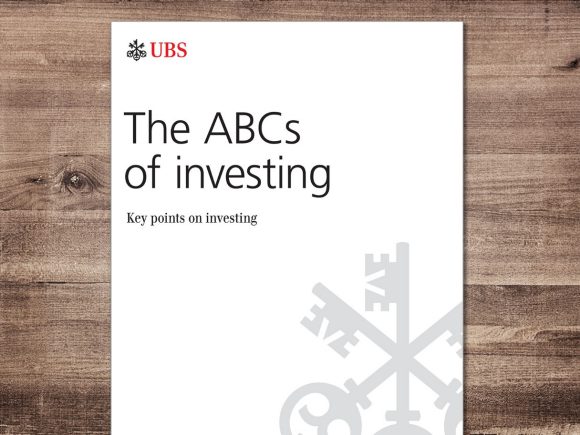We’re here for you
Arrange an appointment for a nonbinding consultation, or if you have any questions, just give us a call.

Investing
Many investors are forever wondering if there is a best time to invest. The answer is now. Learn why you shouldn’t wait for the perfect moment and why your strategy matters.
Content:

Buy when the share price is lowest and sell when it is highest is what many investors aim to do. But if you focus too narrowly on timing your investment just right, you may end up missing out. Waiting for the ideal time seldom brings the desired returns in the long run.
Trying to catch the perfect moment to invest is like looking for a needle in a haystack. The success of this approach depends more on luck than strategy. Long-term investing is more likely to be fruitful. The longer your investment horizon, the less important the timing of your investment, and prevailing market conditions play a secondary role. Much more important than timing is that you follow a personal investment strategy that matches your risk profile.
The timing of your investment becomes irrelevant if you stick to the right long-term strategy. Investments held for a longer period usually generate higher returns than quick sales. Despite this, many investors still try to exploit the promise of perfect timing in the hopes of increasing their returns. This method of buying and selling quickly is known as the market-timing strategy. This approach involves investors targeting the optimum time to buy or sell. If you pursue this time-focused strategy, the moment you enter the market becomes critical. Even then, it is only in hindsight that you can judge whether you bought or sold a bond or share at the ideal time.
The market-timing strategy focuses above all on recognizing short-term price fluctuations and using them to your financial advantage. The strategy can reward you with considerable gains, but always carries a fair amount of risk, requiring you to keep a constant eye on the market. In addition, frequent buying and selling generates transaction costs that reduce your net return.
In contrast, in the buy-and-hold strategy, investments are held for the long term. Your return is generated from the positive performance of equities over a longer period. Returns are generally somewhat lower, but so is the risk.

One thing is certain: to invest successfully, you need a long-term, well-thought-out strategy that is tailored to you. If you are looking for the right time to start investing, it is always now. The earlier you start, the longer your investments will last. Long-term investments are also successful because fluctuations in the price of securities often smooth out over time.
The longer you are invested, the more average performance will count compared to the start date. The start date becomes even more important if you only want to invest for a short period because potential lows in the market can no longer be compensated over time and will have a greater impact. If you sell again quickly, the value of your investment may well be lower than the actual purchase price. This means that your chances of taking a loss increase when you invest over shorter periods of time.
Important aspects of a long-term investment strategy
According to experts, your best chance of achieving a reasonable return on your investments is over a time horizon of ten years. Only then do the factors that compensate for price fluctuations take hold. Furthermore, your investment strategy should always be based on the analysis of trends, markets, industries and companies. Alongside these aspects, you should also consider the following when creating your individual portfolio.
Are you more risk-tolerant or do you shy away from investments where the possibility of a loss is comparatively high? Your answer to this question is crucial for the design of your portfolio. Irrespective of this, to achieve long-term and sustainable success, it is advisable to invest small amounts regularly over several years. You can achieve this through offers such as UBS key4 smart investing, where regular amounts are invested in forms of investment that you have predefined.
Whatever your own risk profile, you should always broadly diversify your assets. This way, you can offset losses in one investment with gains or a stable price in another investment. Your risk exposure is particularly high if you invest your assets in just one share or sector. If, for example, negative political or economic events – whether on the company side or worldwide – lead to a fall in the share price, you could lose a large portion of your wealth. But if you diversify your portfolio and make phased payments, you will benefit in the long term from the so-called average cost effect, i.e. the offsetting of fluctuations in value through diversification and staggering.
Even if your strategy is designed for the long term, you should review it regularly. After all, your life circumstances will change repeatedly over time, whether due to a change in salary, buying a house, starting a family or retirement. You should revisit your strategy and adjust it if necessary for all major life events. This works best with the help of professionals who know the market well and can consult the appropriate analyses.

As a rule, we do not recommend waiting to invest. But there is one thing you need to consider: your financial situation, which must allow you to invest some of your money. Alongside your investment, always make sure you have built up sufficient funds that you can access at short notice. This way, you avoid being forced to sell your investments at an inopportune time just to get money you urgently need. Only invest as much as you can spare without having to make sacrifices in your everyday life or not having enough on hand for emergencies.
Successful investing is not a matter of luck or chance. Rather, it is based on a long-term strategy that suits your personality. But one thing is clear: it is not worth waiting for the perfect moment. Investing some of your money is usually more profitable than leaving it in a savings account with low interest rates while inflation erodes its value.
But don’t jump blindly into your first investment. Together with experts, you should work out in advance exactly how long, how much, and which types of investments you want to make. Reviewing your strategy and adjusting it as necessary is significantly more profitable than quick buying and selling.
Arrange an appointment for a nonbinding consultation, or if you have any questions, just give us a call.
Disclaimer